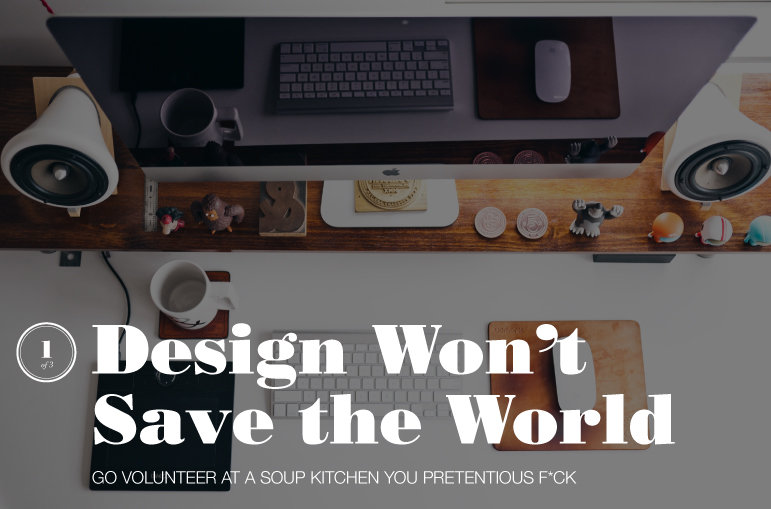
Through my studies, through the inspiring individuals I’ve met and through the innovative organisations I’ve encountered I’ve seen the potential design holds. And I believe that it totally has the ability to save the world…
…within reason.
While I’m proud to be an optimist, I’m no fool. I’m not casting all hopes for the salvation of humanity onto the shoulders of design alone. The world is complex and the problems faced by humanity are many. I realise that design is not some magic pill that will solve all our problems if we do it just right. But with design becoming more integrated into life as we know it, and designers becoming influencers and shapers of culture, we are presented with a tremendous opportunity to create change. Large scale change. Change that may some day save the world.
This is where Social Design comes in.
So… What is Social Design, and what does it mean? You may have heard it called something else: Design for Social Change, for Social Impact, for Social Good… As the various names suggest, Social Design can often mean many things to many people.
William Drenttel sees it as an all-encompassing practice that includes end-users and social participants, framing it as a “larger activity that depends upon design in all its forms — thought, processes, tools, methodologies, skills, histories, systems — to contribute to the needs of a larger society.” His essay is a great place to start in terms of understanding what Social Design is.
Ingrid Burkett, the Social Design Fellow at the Centre for Social Impact, offers an excellent explanation of ‘Design for Social Purpose’ vs ‘Designing using Social Process’ and explores its potential applications.
And Naresh Ramchandani, from Pentagram, distills the definition down to a simple mental prompt: “Don’t forget to Change the World.”
While the above definitions have helped to clarify my thoughts on ‘Social Design’, for me, it simply means using your particular design skill-sets, whether they be Graphic, Digital, Spatial, Product, Service Design or Design-Thinking, to give back to the community, contribute meaningfully to the world, and help create positive social change.
Now that we know what Social Design is, the next logical questions that arise are “Why should this matter to us? Is it important enough to warrant our attention?”
Over the next few weeks i’ll be exploring these questions further, painting a fuller picture of the discipline and discussing ways to get involved, both locally and internationally.
Jade Tang-Taylor, is the co-founder and design director of Curative; a creative agency that works exclusively on projects that help make the world a little bit better, co-host of CreativeMornings/Auckland and is a Design Assembly friend.





